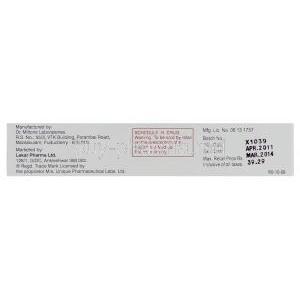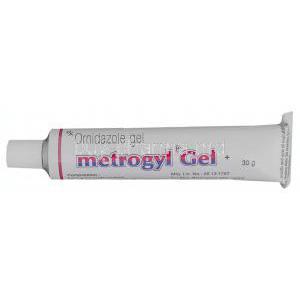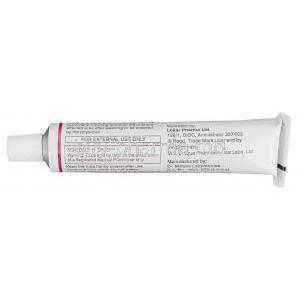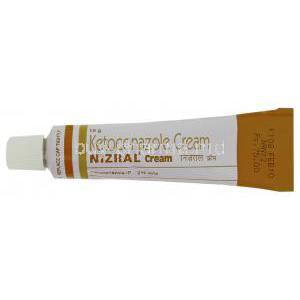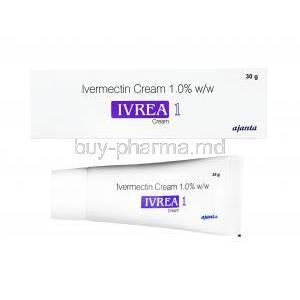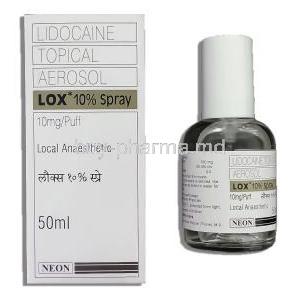Metrogyl, Metronidazole Gel
- Introduction
- How Metrogyl, Metronidazole Gel Works
- Dosage and Administration
- Uses of Metrogyl, Metronidazole Gel
- Off-label Use
- Composition of Metrogyl
- Storage Instructions
- Interactions with Other Drugs
- Side Effects of Metrogyl, Metronidazole Gel
- Common Side Effects
- Warnings and Contraindications
- Careful Administration and Important Precautions
- Administration Specifics
- To the Elderly
- Adjustments and considerations for older adults
- Monitoring for age-related sensitivities
- To Pregnant Women and Nursing Mothers
- Known risks and benefits during pregnancy
- Safety considerations for lactating mothers
- To Children
- Pediatric dosage and safety precautions
- Recognizing signs of adverse reactions in younger patients
- Overdosage
- Handling Precautions
Introduction
Historical background of Metronidazole Gel
Metronidazole Gel, which is widely recognized as Metrogyl, has a historical connection in the field of medicine. Originally derived from the antiprotozoal medication metronidazole, this gel has become a tool in dermatology for combating specific bacterial and protozoal infections. Its origin can be traced back to the middle of the century when scientists were actively searching for compounds capable of effectively addressing a wide range of microbial pathogens.
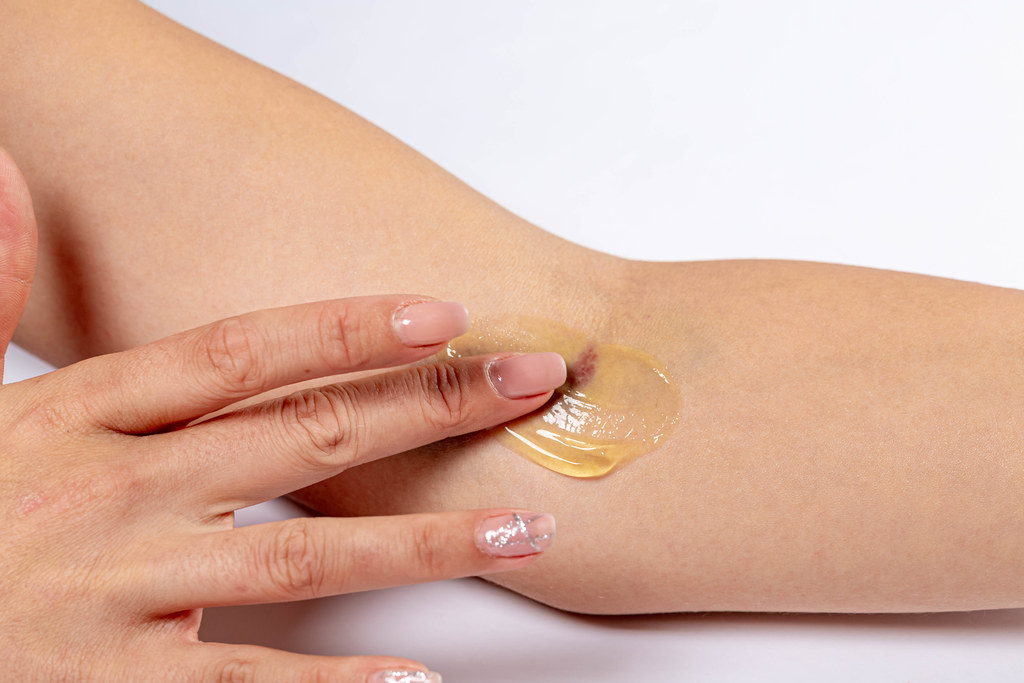
Applying Gel
Main components and their roles
Metronidazole Gel contains a combination of components, each playing an important role in its effectiveness as a therapeutic treatment;
- Metronidazole: This active ingredient is responsible for the gel's ability to combat specific bacteria and protozoa.
- Carbomers; These ingredients act as gelling agents, giving the gel its characteristic texture and spreadability.
- Propylene Glycol: It serves as a moisturizer, attracting moisture to the skin and helping to stabilize the product.
- Preservatives and pH adjusters: These are essential for maintaining the gel's shelf life and ensuring it performs optimally with a pH that is compatible with the skin.
Overview of its therapeutic properties
Metronidazole Gel is widely praised for its antibacterial and antiprotozoal properties, making it a key player in the field of therapy. One of its benefits is its effectiveness in treating rosacea, as it helps reduce the presence of inflammatory pustules and papules. Furthermore, this versatile gel also tackles vaginosis by addressing the imbalance, in vaginal flora.
How Metrogyl, Metronidazole Gel Works
The antimicrobial action: A closer look
The impressive antimicrobial effectiveness of Metrogyl can be attributed to its ingredient, metronidazole. This component has a dislike for specific anaerobic bacteria and protozoa, which makes it a powerful adversary against these microorganisms.
Inhibition of bacterial DNA synthesis
At this level, metronidazole acts as a disruptor. It is specifically absorbed by bacteria and protozoa. Inside, it undergoes a chemical reaction to produce reactive substances. These formed compounds then attach themselves to the DNA of the bacteria, leading to a halt in its production. This process is crucial in preventing the bacteria from multiplying, thus hindering its growth and spreading in the run.
Effects on protozoal cells
Protozoa, despite being organisms, are susceptible to the effects of metronidazole. When the gel is applied, it efficiently penetrates the structure of the protozoa. This triggers a series of reactions that ultimately result in damage to the protozoal DNA – an event of great significance that leads to the demise of the organism.
Dosage and Administration
General guidelines and considerations
When using Metronidazole Gel, it is crucial to follow the recommended instructions. Apply a layer of the gel, making sure to cover the affected area evenly. It is important to avoid getting the gel in your eyes or on any membranes. Additionally, before applying the gel, it is wise to cleanse the area and make sure there are no remaining lotions or cosmetics.
Differences in application for various conditions
The idea that "one size fits all" doesn't really apply when it comes to using Metronidazole Gel. Depending on the condition, like rosacea, a healthcare provider might prescribe applying it twice daily. However, for vaginosis, the gel may be used intravaginally with the help of an applicator, and the frequency and duration could vary.
Importance of following prescribed amounts
Following the recommended dosages is not a matter of medical precision, but it is based on solid clinical reasoning. Using too much can worsen the side effects, while using too little may make the treatment ineffective. Therefore, it is crucial to adhere to the guidelines provided by your healthcare provider to ensure that you receive the therapeutic benefits without experiencing any unnecessary consequences.
Uses of Metrogyl, Metronidazole Gel
Treatment of bacterial infections: specifics and mechanism
Metrogyl, containing the ingredient Metronidazole(1) serves as a strong defense against certain stubborn bacterial infections(2). Designed to be applied, its main function is to target anaerobic bacteria specifically(3). Once Metronidazole enters cells, it undergoes a transformation process that produces reactive compounds. These compounds then attach themselves to DNA, preventing DNA synthesis and the growth of bacteria. This mechanism effectively disrupts the metabolic processes of these bacteria, leading to the breakdown of cells and ultimately reducing the presence of bacterial colonies in the affected area. Metronidazole gel is commonly used for the treatment of aVaginal Infections (4)
1. Cleaveland Clinic - Metronidazole Gel
2. Mayo Clinic - Metronidazole
3. NCBI - Metronidazole
4. PubMed - Metronidazole Vaginal Gel 1.3% in the Treatment of Bacterial Vaginosis: A Dose-Ranging Study
Role in treating protozoal infections
Not satisfied with fighting against bacteria, Metrogyl demonstrates remarkable effectiveness in treating certain infections caused by protozoa. Protozoa, being more complex than bacteria, have proven difficult to treat with medications. However, Metronidazole has established itself as a solution in this field. Once it enters the protozoal cell, Metronidazole initiates a series of reactions that disrupt the protozoal DNA, leading to the demise of these organisms. The gel's antiprotozoal properties have played a role in alleviating conditions like trichomoniasis and are essential in treatment plans for amebiasis.
Periodontal treatments: addressing gingivitis and periodontitis
The mouth, which is home to a range of different microorganisms, often experiences problems like gingivitis and periodontitis. In these cases, Metrogyl can be an ally. When used as part of treatments, it specifically targets the anaerobic bacteria that contribute to these conditions.
By reducing the number of bacteria in gum pockets, the gel creates an environment that promotes healing. This helps halt the progression of the disease and prevents potential consequences such as tooth loss or other systemic complications that may arise if left untreated.
Rosacea, a skin condition characterized by redness, pimples, and irregular blood vessels on the face, often leaves those affected searching for an effective solution. That's where Metrogyl comes in. Known for its anti-inflammatory and antimicrobial properties, Metronidazole Gel has gained praise for its ability to reduce the signs and symptoms of rosacea. By using this gel, you can expect a decrease in inflammation and an improvement in skin balance. This leads to a rejuvenation of your skin texture and appearance, ultimately boosting your confidence if you're dealing with this condition.
Off-label Use
Uses in dermatology: acne, seborrheic dermatitis
The field of dermatology deals with conditions that may not be life-threatening but can significantly affect a person's quality of life. Acne and seborrheic dermatitis are particularly troublesome, causing discomfort and impacting one's social well-being. Interestingly, Metronidazole Gel, which is typically used for purposes, has shown potential in providing relief for these conditions. Let's take a look;
- Acne: Although it's not its purpose, Metronidazole has demonstrated promising results, in reducing inflammation and improving inflammatory acne lesions.

Acne
- Seborrheic Dermatitis: This condition is characterized by scales resembling dandruff. The gel seems to address inflammation and target specific microbes that contribute to its development, leading to some improvement.
Exploratory treatments: potential and emerging applications
The field of medicine is constantly changing. New treatments often come from unexpected sources. Metronidazole Gel, for example, has shown potential beyond its intended uses. Researchers have explored its effects on conditions, including wound healing, fungal infections, with suspected bacterial co-infections, and other skin disorders where inflammation is a key factor. Its antimicrobial and anti-inflammatory properties may help speed up the recovery process and broaden its applications.
Importance of medical guidance for off-label use
Navigating the pathways of using medications for unapproved purposes requires relying on medical guidance. While there may be evidence and exploratory studies suggesting potential benefits of using Metronidazole Gel for various conditions, it's important to recognize that such use comes with uncertainties. As a result, it is essential that patients do not initiate or modify treatment regimens based on rumors or limited knowledge.
In this context, physicians play a role as guardians of therapy, and their wise advice should serve as the foundation for any decision regarding treatment options. Regular medical assessments are necessary to ensure the safety and effectiveness of using medications off-label labels acting as a measure against potential adverse events or less than optimal outcomes.
Composition of Metrogyl
Breakdown of active and inactive ingredients
Metrogyl is a regarded pharmaceutical product that combines various active and supporting ingredients. The key ingredient, Metronidazole, serves as an agent against specific bacterial and protozoal infections. Additionally, other components like water, propylene glycol, and carbomer play a role in ensuring optimal delivery and stability.
- Metronidazole acts as the agent in this gel, providing its antimicrobial properties.
- Excipients are often. Play an important role in maintaining the gel's consistency and stability and improving its absorption into the skin.
Role of each component in the gel's effectiveness
Each ingredient in Metrogyl has been carefully chosen to create an effective product. Metronidazole, which is known for its ability to combat pathogens, interacts with the DNA of bacteria and protozoa to hinder their growth. The additional components, although not antimicrobial, play a crucial role. They help maintain the uniformity of the gel for dosing, improve its ability to penetrate through skin barriers for better absorption of Metronidazole and prevent degradation over time to ensure the gel remains intact.
Storage Instructions
Optimal storage temperatures
To ensure that Metrogyl remains effective for purposes, it is important to store it under specific conditions. The ideal storage temperature range for Metrogyl is between 15 and 30°C. Extreme heat or cold can negatively impact its qualities, making it less suitable, for therapeutic applications.
Safety precautions to prevent degradation
The effectiveness of Metrogyl, to any other medication, depends on proper storage techniques. It is important to keep it from direct sunlight as this can cause it to break down. After using the tube, make sure to close the cap to prevent drying out and contamination. Avoid storing it in areas to prevent the growth of microorganisms.
Shelf life and signs of expiration
Metrogyl, although it is durable, is not permanent. Usually, it remains effective for up to 24 months from the date of production. After this period, its effectiveness may decrease. Signs that the gel has expired include a change in color or texture, a smell indicating degradation, and the presence of separation or visible particles.
Interactions with Other Drugs
Common drugs that may interfere with Metrogyl
Taking medications concurrently with Metrogyl can result in unexpected interactions. Warfarin, disulfiram, and specific antiepileptic drugs are particularly noteworthy in this regard. When these medications are used together, they can potentially. Reduce the intended effects or even trigger adverse reactions.
Potential risks and how to avoid them
If drug interactions are not properly managed, it can put patients at risk. The consequences can vary from reduced effectiveness of treatment to side effects like increased blood thinning or neurological issues. To navigate this danger,
- Always make sure to give healthcare professionals a complete list of all the medications you are currently taking.
- Be cautious when using over-the-counter medications or supplements.
- Follow the prescribed dosages and schedules strictly.
Importance of informing healthcare providers of concurrent medications
Establishing communication with healthcare providers is not just advantageous but absolutely necessary. It provides them with the information to customize treatment plans carefully. By being aware of any medications being taken, they can prevent possible drug interactions and ensure the safety and effectiveness of the prescribed treatment.
Side Effects of Metrogyl, Metronidazole Gel
Overview of potential adverse reactions
Like any medication, highly effective ones like Metrogyl or Metronidazole Gel can have potential side effects. While it is designed to treat protozoal infections, there is a possibility that users may experience unintended reactions. These reactions can range from skin irritations to more systemic manifestations. It's important for healthcare providers to have an understanding of these potential reactions in order to provide the best care for their patients and ensure the success of the treatment.
Differentiating between common and rare side effects
Like any medication, Metrogyl has different levels of adverse reactions based on how often they occur. Some reactions are common. Affect a larger number of patients, while others are rare but can be more severe. Understanding the difference between these two categories helps both patients and healthcare providers to be prepared, recognize, and manage any effects that may arise.
Common Side Effects
Topical reactions: redness, itching, burning
Metrogyl can sometimes cause skin irritation when applied topically. Many patients have reported experiencing redness at the site of application, which is a sign of localized irritation. Itching, although generally harmless, can be quite uncomfortable. Some people also describe a burning or stinging sensation as what you might feel with minor skin abrasions.
Systemic reactions: nausea, headache, etc.
Although Metrogyl is primarily used as a treatment, its components can occasionally enter the bloodstream, causing effects that go beyond the area of application. One notable example of these effects is feeling nauseous. Having an intense urge to vomit. It can also lead to headaches ranging from discomfort to more severe throbbing pain. Additionally, other possible symptoms may include dizziness or experiencing a taste in the mouth.
Managing and reporting side effects
It is crucial to stay alert and cautious while dealing with the side effects of medications. If you experience any of the mentioned symptoms, it would be wise to stop taking the medication and consult with a healthcare professional. In case of severe symptoms, adjusting the dosage or considering additional treatments might be suggested to alleviate any discomfort. Remember to keep a record of any worsening symptoms and report them to facilitate a thorough review of your treatment plan.
Warnings and Contraindications
Known allergies and hypersensitivities
Before starting any treatment plan, it is crucial to evaluate whether the patient has any allergies. If someone has a known sensitivity to Metronidazole or any of the ingredients in Metrogyl, they should avoid using it to prevent allergic reactions.
Health conditions that may be adversely affected
Some individuals may find it less than ideal or even harmful to use Metrogyl if they have pre-existing health conditions. Those who have a history of blood disorders or serious neurological disorders should be cautious when considering its use and preferably seek guidance from a vigilant healthcare professional.
Situations where Metrogyl should be avoided or used with caution
Although Metrogyl has proven to be effective in treatment, it may not be suitable for everyone. For pregnant or breastfeeding women, it should only be used if absolutely necessary and recommended by a healthcare professional. It is also important to avoid using Metrogyl at the time as alcohol, as this could potentially cause a reaction similar to disulfiram. As always, it is crucial to assess the risks and benefits before starting any medication.
Careful Administration and Important Precautions
Best practices for applying the gel
The way you apply a medication can greatly affect how well it works. When using Metrogyl gel, make sure the area you're treating is clean and dry. You only need to use an amount, usually a thin layer, for most conditions. After applying it, it's wise to wash your hands to prevent accidentally transferring it to places or people you don't want it to go.
Avoiding contact with eyes and mucous membranes
The eyes and mucous membranes are incredibly sensitive. It is crucial to avoid any contact with these areas while using Metrogyl. If the gel accidentally gets into your eyes, immediately rinse them thoroughly with plenty of water. If irritation continues, it is essential to seek medical assistance. Similarly, if the gel is ingested or applied to mucous membranes, it is strongly advised to consult a doctor promptly.
Recognizing symptoms of allergic reactions
Although it is uncommon, some people may experience reactions to Metrogyl. These reactions can vary in severity from symptoms like a rash to more serious ones, like angioedema or anaphylaxis. If you notice any symptoms after using Metrogyl, stop using it immediately and seek urgent medical help, especially if the symptoms are getting worse or if you have difficulty breathing. It's important to document any reactions as they can help inform future treatment options.
Administration Specifics
To the Elderly
The physiology of aging is not simply a version of the physiology found in younger individuals; it undergoes fundamental changes. As a result, older people may respond differently to Metrogyl compared to their counterparts.
Adjustments and considerations for older adults
Considering the possibility of a decline in kidney or liver function due to age, it may be advisable to use caution and potentially reduce the amount or frequency of application. Additionally, older individuals may experience an increased sensitivity to side effects.
Regular evaluations after the application process have advantages. These evaluations should cover not only level observations but also consider broader aspects, remaining attentive to any indications of;
1. Neurological changes such as dizziness or tremors.
2. Gastrointestinal issues, particularly if there has been ingestion of Metrogyl.
To Pregnant Women and Nursing Mothers
The periods of pregnancy and after childbirth have physiological characteristics, which often require adjustments in the way medications are considered.
Known risks and benefits during pregnancy
Although the absorption of Metrogyl after applying it topically is not extensive, the period of pregnancy is known for permeability. There is evidence indicating possible risks to the unborn baby. Therefore, its usage should be based on an analysis of risks and benefits, preferably when other treatment options are not feasible.
Safety considerations for lactating mothers
Breastfeeding mothers face a line between what they need for treatment and the safety of their newborns. Even though only a small amount of medication gets into their system, there's still a chance that it might end up in breast milk. So if it's absolutely necessary, we recommend applying the gel after feeding to reduce the chances of any transfer happening. Also, keep an eye on your baby for any reactions, although these are extremely rare occurrences.
To Children
Children who are receiving treatment often require special attention when it comes to choosing the right medications, considering their changing bodies and unique needs.
Pediatric dosage and safety precautions
When it comes to children, it's important to ensure that the dosage is appropriate for their weight and age. Since children have skin and a larger surface area in proportion to their weight, they may absorb substances more easily. So, when applying medication, it is crucial to keep it minimalistic and only cover the area. It's also important for an adult to supervise the process to prevent ingestion or getting the medication near their eyes.
Recognizing signs of adverse reactions in younger patients
Children may not always be. Even notice negative reactions. Therefore, it is important to monitor for the following after application;
- Any skin rashes or increased redness.
- Systemic symptoms such as irritability, digestive issues, or changes in sleep patterns.
It is crucial to stay vigilant and observe these signs.
Overdosage
Recognizing symptoms of Metrogyl overdose
Taking much of any medication, including Metrogyl, can lead to negative consequences.
- Signs of an overdose of Metrogyl may include redness or irritation on the skin where it was applied,
- Neurological symptoms like dizziness,
- Seizures or peripheral neuropathy
- Gastrointestinal issues such as nausea, vomiting, or diarrhea
- unusual tiredness or confusion, indicating a more widespread effect on the body.
Immediate steps to take and treatment options
If you suspect an overdose, the important thing to do is to immediately stop using it. After that;
- Wash the area where it was applied with plenty of water to reduce any absorption.
- Seek medical help if necessary. Although there is no antidote for Metrogyl, supportive treatments can help improve symptoms.
- In cases of oral ingestion, activated charcoal might be recommended to prevent it from being absorbed into the body systemically.
Long-term implications and recovery
In cases when timely action is taken, the outlook after an overdose of Metrogyl is generally positive. However, it is crucial to remain vigilant for any delayed symptoms. Regular medical checkups for patients who experienced neurological or systemic symptoms are essential to ensure complete recovery.
Handling Precautions
Ensuring product purity and efficacy
The effectiveness of Metrogyl depends on its crafted composition and integrity. Therefore, it is important to check the seal before using it for the first time.
- If the seal is broken, it could indicate tampering or contamination.
- Avoid using the product after its expiration date. After this date, its effectiveness may be. There might be potential for adverse reactions due to degradation.
- Following the manufacturer's storage guidelines will help preserve the gel's properties.
Disposing of expired or compromised gel
It is important to handle the disposal of medications with care as we do when administering them. Careless disposal can lead to ingestion or environmental contamination.
- Therefore, it is not advisable to throw the gel in the regular household trash or flush it, down the toilet.
- If there are community drug take-back programs, it would be best to utilize them for proper disposal.
- In case such programs are not accessible, a good approach would be to mix the gel with something unappetizing, like used coffee grounds. Then seal it in a bag and dispose of it safely.
Safety measures during application and storage
For results with Metrogyl, it is important to use it carefully and store it properly.
- When applying the product, make sure your hands are clean and dry to avoid any contamination.
- Be careful not to get the product in your eyes, mouth, or any other sensitive areas.
- After using it, remember to seal the tube to prevent accidental spills or evaporation.
When storing Metrogyl;
- Keep it away from sunlight and extreme temperatures, as they can affect the effectiveness of its active ingredients.
- Also, make sure to store it in a place where children and pets cannot reach it to avoid any ingestion or contact.



